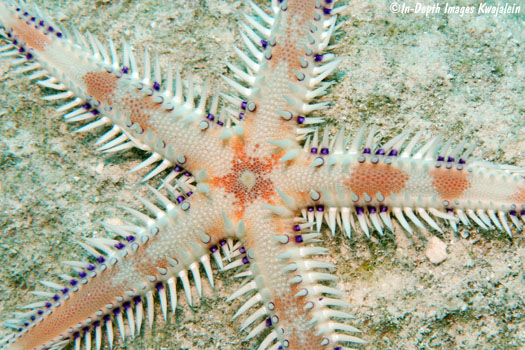
We are currently calling this the fairly widespread Astropecten polyacanthus, although specimens from across its range are variable and close examination of actual specimens would be required to positively identify them. It is also possible multiple species are figured. Our first specimen below resembles published photos of Astropecten andersoni. This interesting star buries in the sand during the day. We have seen specimens only at night, when they emerge and hunt on the surface of the sand. When disturbed, they sink straight down as if being sucked in by quicksand. We have run across only three of four at Kwajalein so far, the largest around 90mm in diameter.

This is the underside of the animal in the previous photo.
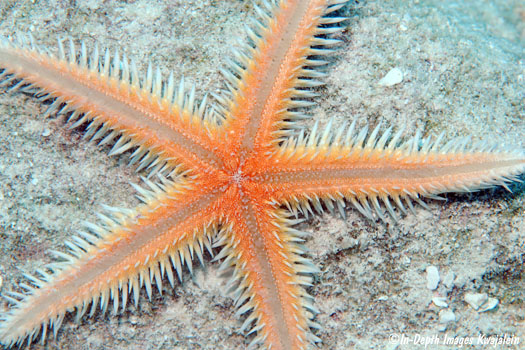
Same animal, sinking into the sand.
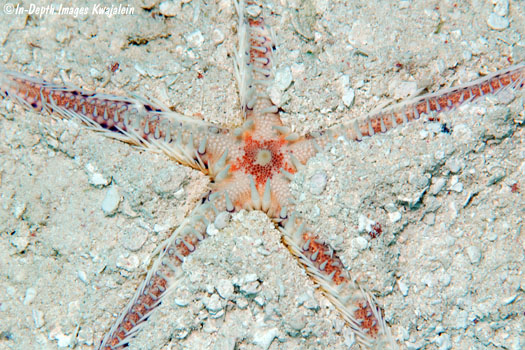
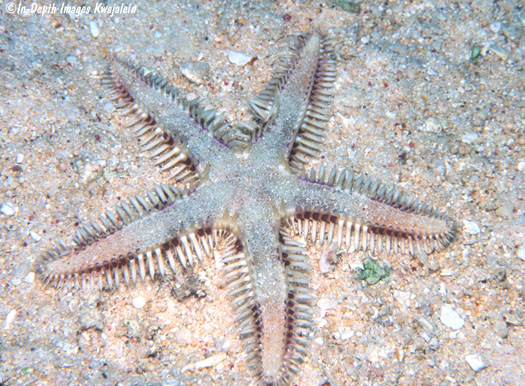
This one had a couple of regenerating arms.
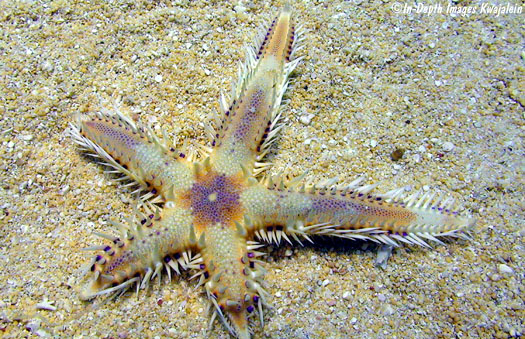
The mouth of the previous specimen.
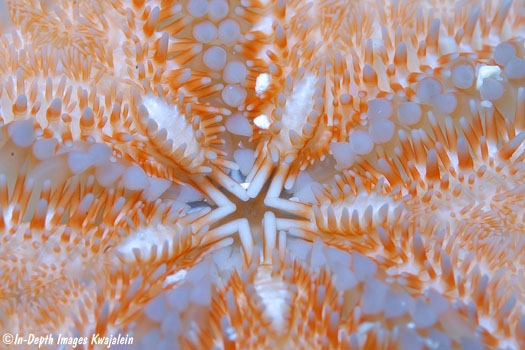
Close-up of one of the arms.
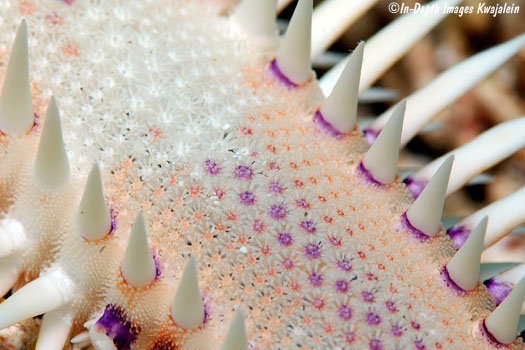
A new tip growing on the end of a lost arm.
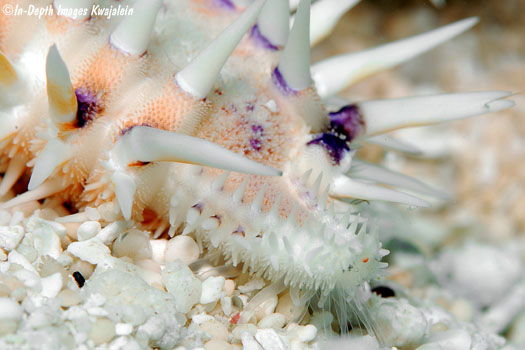
Updated 3 December 2020
Updated 8 February 2024